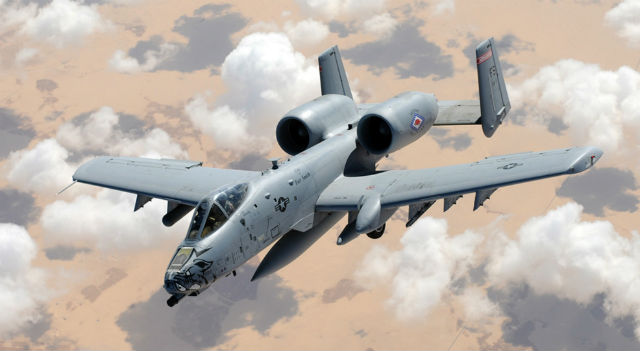The US Air Force’s fleet of Fairchild Republic A-10s has escaped the chopping block again – at least until 2015.
The recently-passed National Defense Authorisation Act for fiscal year 2014 prohibits the service from spending money to retire more of the venerable close air-support aircraft, or from “making significant changes” to A-10 “manning levels” during the fiscal year, which ends on 30 September.
In addition, the bill, which was signed by President Barack Obama on 26 December, prohibits the USAF from retiring or planning to retire additional A-10s between October 2014 and the end of the calendar year.
A joint statement from US congressional committees says the law is intended to “provide breathing space for congress to conduct oversight and to consider what actions to take on any force structure changes the air force may propose in fiscal year 2015.”

US Air Force
The bill does not apply to A-10s that have been approved for retirement in previous fiscal years.
The air force had roughly 320 of the aircraft at the end of November 2013, and is retiring A-10s at a rate of roughly two per month. When those scheduled retirements conclude, the service says it will be left with 283 of the aircraft.
The authorisation bill comes amid discussion in Washington DC and within the air force about the future of the A-10 in the current budget-constrained environment.
In a media briefing on 13 December, air force chief of staff Gen Mark Welsh called the close air-support mission critical to the service, but noted that it is considering “fleet divestitures” as a means of achieving some $12 billion in required budget savings. He added that other aircraft can provide close air support and that the USAF has long planned to replace A-10s with Lockheed Martin’s F-35A, which the air force hopes will have initial operational capability by December 2016.
The air force said in mid-October 2013 that it could save $3.5 billion over five years by cutting its fleet of 326 A-10s, reports suggested. In November, however, A-10 supporters in Washington argued that close air support would suffer with type's retirement.
Pierre Sprey, who worked for US Secretary of Defense Robert McNamara in the late 1960s and helped lead the air force’s A-10 concept design team, said during a seminar that only several thousand people in the armed services understand close air support.
He said A-10 divestitures would “scatter” those personnel, and the people “who know how to bring air power to bear will be gone”.
Source: FlightGlobal.com



















